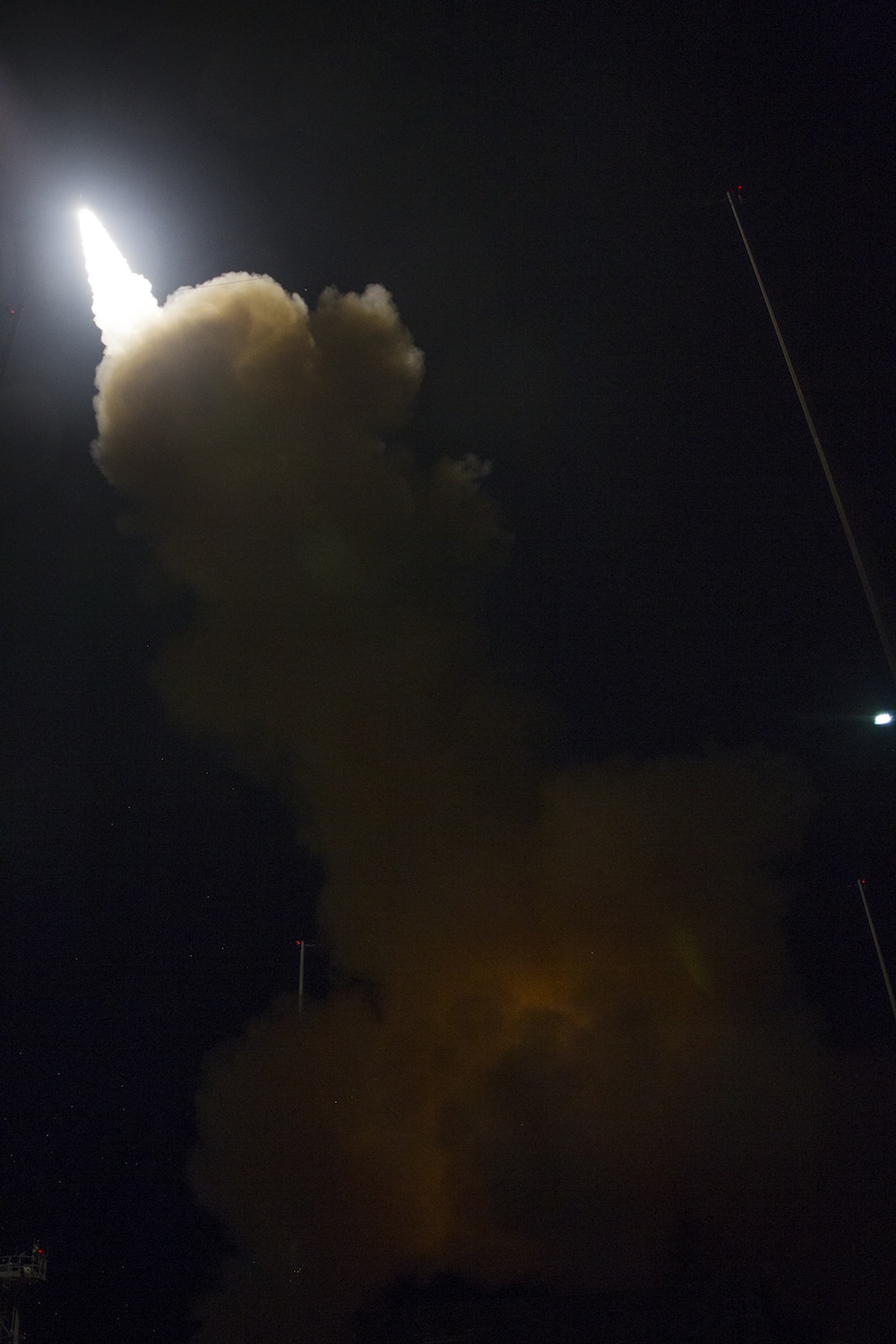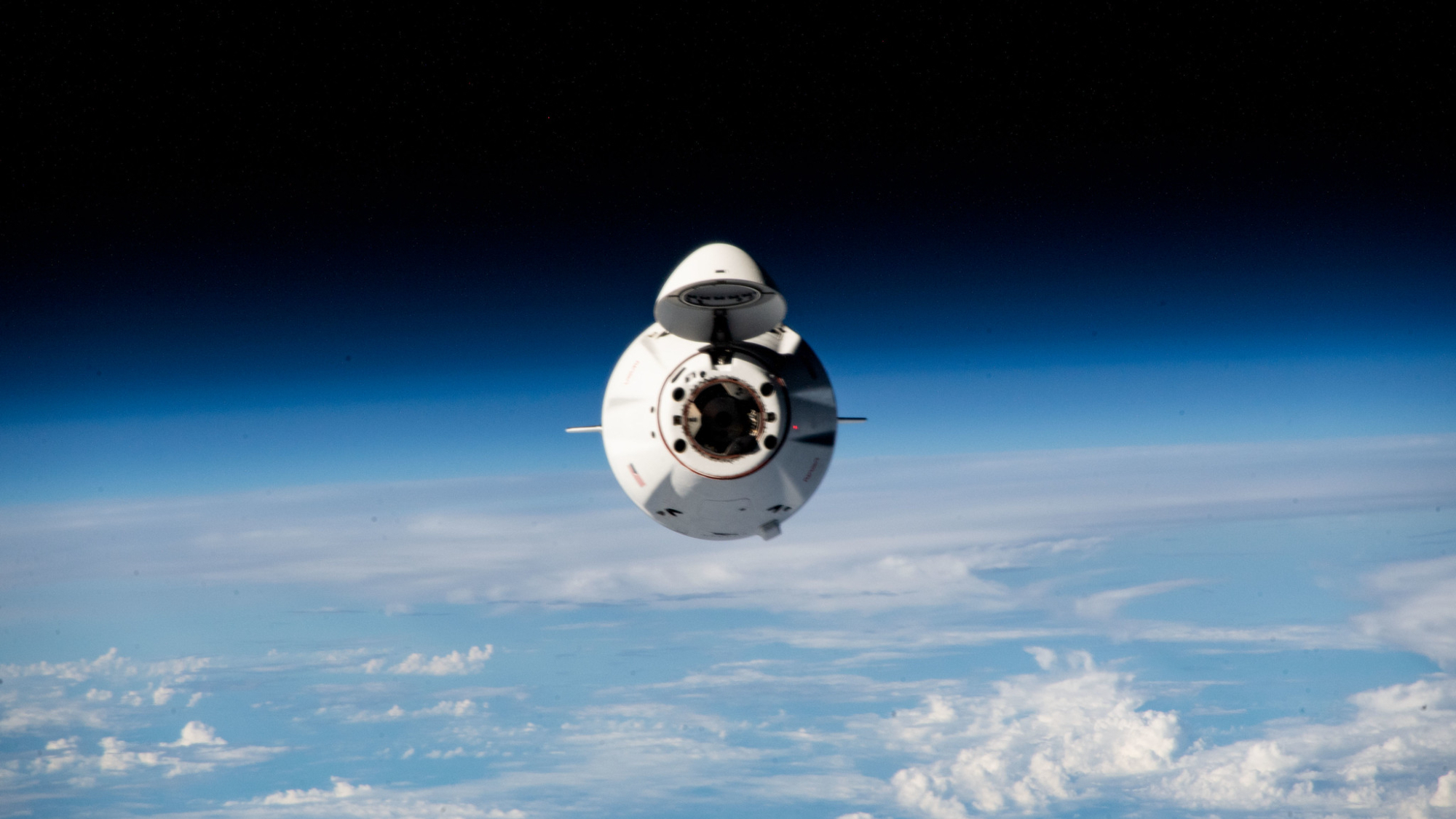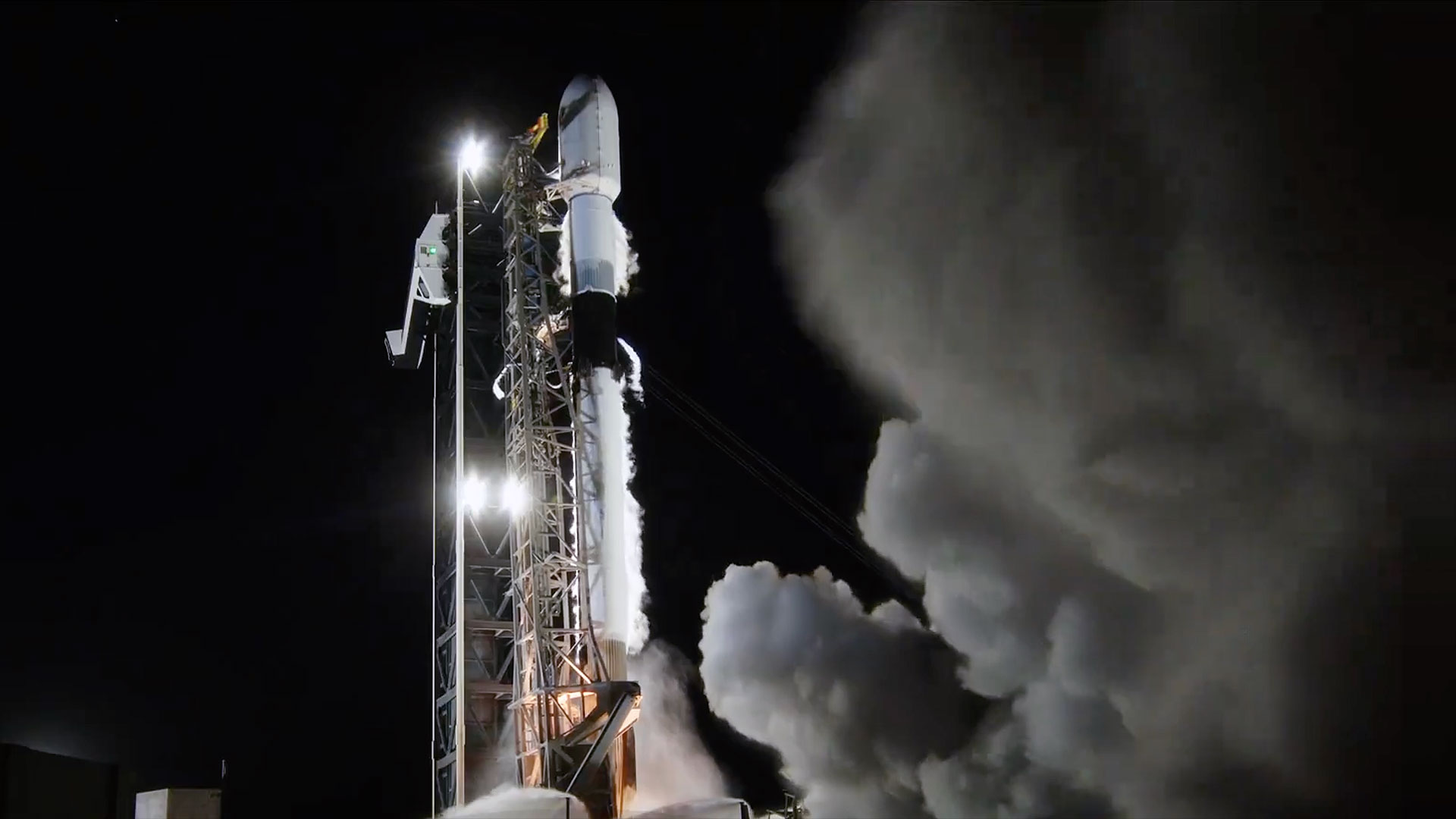US Navy Launches SM-3 Missile from Land in Big Test (Photo)

The U.S. Navy successfully launched a Standard Missile-3 — traditionally a ship-based, anti-ballistic missile — from an onshore launch site for the first time, military officials announced Wednesday (May 21).
The successful missile launch late Tuesday (May 20) from a test site at the Pacific Missile Range Facility on the island of Kauai, Hawaii, represents an important milestone for the Navy, which will soon be charged with operating the first of two planned land-based Standard Missile-3 (SM-3) sites in Romania.
"There are few differences between launching a Standard Missile-3 from a ship versus land-based systems," Wes Kremer, vice president of Air and Missile Defense Systems at Raytheon, the American defense contractor that manufactures SM-3 systems, said in a statement. "It's the same missile, sea- or land-based. This provides defense planners and the warfighter with incredible flexibility to address the whole gamut of threats and geographic locations." [7 Technologies That Transformed Warfare]
The overlap between the sea-based and land-based systems will likely come as a relief to the sailors preparing to leave for the Romanian SM-3 site in 2015.
The site is an integral part of the United States' European Phased Adaptive Approach (EPAA) — a missile defense plan designed to protect American personnel and allies in Europe from ballistic missile attacks, according to the U.S. Department of Defense. A second SM-3 site is slated to be operational in Poland by the year 2018.
"Romania's Aegis Ashore site will complement other U.S. Navy ships already in the area carrying SM-3s," Mitch Stevison, senior director of the Standard Missile-3 program at Raytheon, said in a statement. "Not only will more of Europe be covered, but the coverage that currently exists will be more robust."
The EPAA is based on the Aegis Ballistic Missile Defense System, or Aegis BMD, which is a sea-based system. The land-based component of the Aegis system — dubbed Aegis Ashore — has long been in the works but is just now being put to the test.
Get the Space.com Newsletter
Breaking space news, the latest updates on rocket launches, skywatching events and more!
During this week's test, a simulated ballistic missile target was acquired, tracked and engaged by the Aegis Ashore system, according to the Department of Defense. The live-fire test was designed to confirm the functionality of Aegis Ashore with ship-based missiles. The experts who witnessed the test expressed satisfaction with the outcome.
"[This] test wasn’t an intercept flight test, but we had five successful back-to-back SM-3 intercept flight tests in 2013, and there’s a lot of confidence in this missile’s capabilities," Stevison said. "These are proven technologies. Moving this capability from sea to land makes sense.”
Follow Elizabeth Palermo on Twitter @techEpalermo, Facebook or Google+. Follow Live Science @livescience. We're also on Facebook & Google+. Original article on Live Science.
Join our Space Forums to keep talking space on the latest missions, night sky and more! And if you have a news tip, correction or comment, let us know at: community@space.com.
Elizabeth is a former Live Science associate editor and current director of audience development at the Chamber of Commerce. She graduated with a bachelor of arts degree from George Washington University. Elizabeth has traveled throughout the Americas, studying political systems and indigenous cultures and teaching English to students of all ages. She has also contributed to Space.com and Tom's Guide in the areas of Technology, Launches and Spacecraft, Entertainment, Science, and Human Spaceflight.










